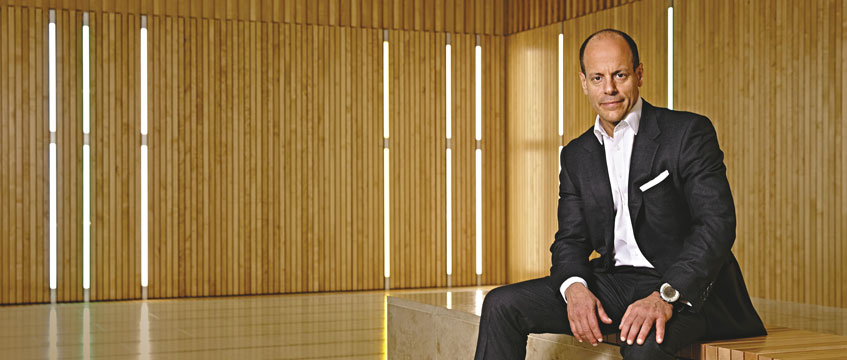As more and more real estate businesses set out their pathways to net zero, many will be beginning to realise that, like all routes to success, the way there will not be straightforward. To help navigate what will undoubtedly be a journey with many twists and turns, EG gathered four experts from across the property sphere to share their expertise.
For all four – John Davies, head of sustainability at Derwent London; Andrew Leiper, net zero carbon lead at Max Fordham; Jonathan Hale, sustainability director at BNP Paribas Real Estate; and Andries van der Walt, head of real estate at Verco – collaboration, commonality and communication were key in staying on track to achieve the sector’s net zero carbon goals.
“We can all agree with one another, and we can all agree from different sides of the table that something needs to be done,” says Derwent’s Davies, “but we do need to work together, particularly in real estate. The landlord/tenant relationship comes up time and time and time again. And it is very, very difficult when you are in a situation where you actively have to manage that situation to work out what is the best way of getting to this collaborative position.
“At the moment it’s very difficult in our sector because as the landlord you are seen as everything in the equation,” he adds. “It’s almost as if we have to try to foresee, anticipate and execute something that we are not in control of.”
For Davies, the need for proper partnership between landlord, occupiers and the whole of the supply chain is critical in achieving net zero, as if a building is not used in the most efficient way, if doesn’t matter how greenly it has been built.
But for proper collaboration to happen, communication needs to be clear and everyone needs to be working to the same standard.
Unintended consequences
Verco’s van der Walt fears that a lack of commonality could knock the industry off track and lead to a host of unintended consequences.
It is currently working with the Investment Property Forum to investigate how the challenge of achieving net zero carbon varies between sectors and geographies.
“As part of that research, we are looking at the unintended potential consequences of some of the frameworks and definitions – such as a potential shortage of capital for harder-to-decarbonise assets and high embodied carbon emissions from demolishing and rebuilding to meet stringent operational energy and carbon targets,” he says.
This knock-on effect of frameworks, definitions and just current actions is one of the biggest threats to derailing the sector’s path to net zero.
If the sector is intent on developing new net zero buildings instead of finding ways to deal with embodied carbon, it is in line for a serious resource issue, says Max Fordham’s Leiper.
He cites an International Energy Agency report from 2017, which estimated that over the next 40 years, 230bn sq m of new construction is going to be built, adding the equivalent of Paris to the planet every year.
“That puts into perspective the scale of our resources and consumption of that,” he says. “So I think embodied carbon and the way we use materials in the next decade is going to come to the fore and we need to tackle that.”
He adds: “It’s fairly simple from an operational perspective for a new build to be net zero-enabled or net zero-compatible by 2030, so we need to go a little bit beyond where we are in terms of fabric performance. We need to electrify and get rid of gas and fossil fuel combustion equipment within our buildings.”
Getting rid of barriers
For van de Walt, it is about getting rid of barriers to success and about changing when opportunities present themselves, instead of sticking with the status quo.
“Let’s not create barriers by locking problems in,” he says. “Every refurbishment, every opportunity for intervention that passes, that is not maximised as an opportunity, locks in emissions for the next cycle and perpetuates the problem. When a new lease is signed and there is no agreement around data sharing or collaboration, that again locks in the problem.”
Davies says no-one is purposely locking in problems but that the acceleration in the sustainability agenda has come at a time when the real estate sector does not necessarily have all the support it needs to maximise every opportunity.
For him, the problem lies in the sector’s lack of investment into research and development, compared with other industries.
“We need to get better at R&D. Many technology companies and fast-moving consumer goods companies are already testing and prototyping three or four editions of the equipment that you see out in the market today,” he says. “I think there are many pointers and many cues that we can take as real estate participants and professionals to take a leaf out of their book and say, how can we accelerate some of that energy, some of that focus and some of that foresight into our net zero carbon journey?”
The impact that the lack of R&D investment will have on the sector’s transition to net zero was highlighted by Fifth Wall founder Brendan Wallace in an interview earlier in the year in which he revealed that in the US, the real estate industry had over the past decade invested just $94m (£68m) into R&D to mitigate its climate impact. A “shockingly low number” he said, that “rounds down to zero when you consider the magnitude of the real estate industry’s contribution to the problem”.
But BNP PRE’s Hale is confident that change is coming. He says that while there is a lot of alignment that still needs to take place to bring different stakeholders together to discuss everything from capital expenditure to tenant needs, the property lifecycle, and the resource and knowledge gap, ESG has become a much broader responsibility within real estate businesses.
“I would ask for senior figures within real estate to continue to be communicative, visible and really lead from the front, and that falls within the investment managers through to consultants and managing agents,” says Hale. “It’s for them to show the way and make it clear that this is being discussed at the highest level. And that they’ve got a plan.”
Even if it involves a wiggly path.
To send feedback, e-mail samantha.mcclary@eg.co.uk or tweet @samanthamcclary or @EGPropertyNews











